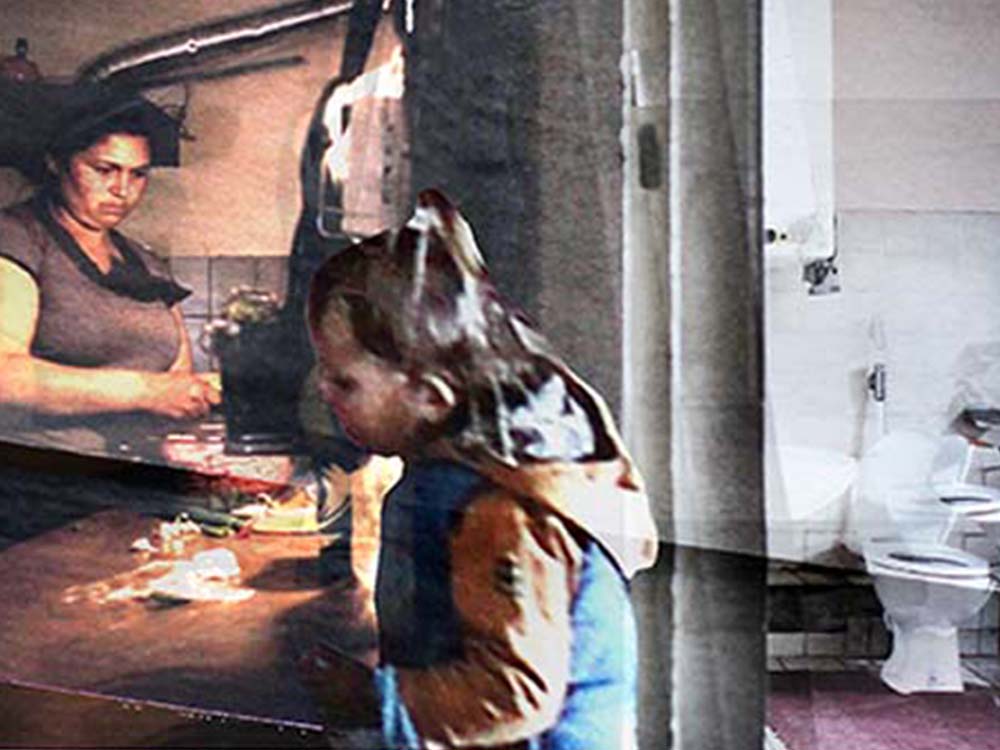Ana Luísa Moura
The Aesthetics of Ethics 2015
The Aesthetics of Ethics is a research-based project on social documentary photography. It reflects on the way social matters get to be portrayed and on what this protocol of representation might say about citizenship, ethics or political consciousness. The installation addresses the topic from a social control point of view; it attempts to unfold the documentary format as a map of human value(s) upon which social judgment might be done. The installation includes deconstructed photographs, printed on four layers of Plexiglas (30 mm distance from each other). Each layer displays a particular amount of information about the topic / people portrayed, next to the original publication in which the photographs were found.
Ana Luísa Moura (PT) has a background in Architecture / Urban Planning and is currently exploring means of visual storytelling and strategic illustration. Her research focuses on typologies of portraying within media imagery, regarding in particular the instrumentalization of vulnerability and personal exposure.


THESIS EXCERPT: "The Aesthetics of Ethics – a study on social documentary photography"
(…) Information on social matters must address the urgency of the topic, the extension of the problem and the moral integrity of the people involved. Exploitation of welfare benefits is a constant concern; many individuals appear to make no effort to work enough, try hard enough or present themselves well enough. The understanding that economic inequality goes far beyond the individual’s power seems to find its backdrop in an increased attention to the individual’s personal effort. The Dutch TV program ‘Dubbeltje op zijn kant’ invites people with debt problems to openly share their privacy in order to receive financial advice and ultimately help. The program gathers different profiles of trouble in order to address and illustrate a variety of moral values. Judgment upon it allows one to restructure what is important and what is not in the management of everyday life. But essentially, what becomes clear is that everyone has a different seat to take and that the proper exercise of this order is achieved by public exposure and judgment. If one doesn’t know how to be poor, society can give him a hand. The public is invited to have an opinion on how these people dress, talk, clean their house or attempt to earn enough to eat. Their condition is mostly their own fault, since they appear to lack the reasoning capacities and life values necessary to find their own way. Unemployment, debt, low income or irresponsible consumption, are not seen as the dramatic result of a sick economy, but as people’s own incapacity to deal with it. The truthfulness of social documentary photography is important in order to make an observer feel at ease. It is important that the picture doesn’t seem to communicate something in particular that people feel forced to digest, but that the observer is given the chance to find things by him/herself. The feeling that one has the right to a subjective peek is essential; it deliberately creates a feeling of uniqueness. Each personal view is then novel and valuable as such. Any opinion that follows feels equally unique and the observer will therefore be eager to express it.
The subtle display of information is essential to the documentary format. The details in the picture should seem casual and relate directly to the values of the intended public. The disruption of these values, made visible in the photographs, is meant to engage a potential observer with a given cause, with a field of social concern. The intrusive nature of documentary photography (blunt exposure of privacy and vulnerability) is supposed to invite sympathy, empathy, to show harshly what is wrong in order to make it better. But when the information displayed suggests that vulnerable people might be guilty of their own condition, isn’t the public invited to judge rather than sympathize? Some of the values referred to above have remained the same since the 19th century: family structure, childcare, father figure, housing conditions and hygiene. Other values are new and specific to contemporary documentary photographs, having to do more specifically with healthcare (obesity or illness), addictions (smoking, drinking), and stereotyped traits such as tattoos or the superfluous ownership of material goods. When failures in these areas are visible in the photographs (and they always are) then inevitably the belief arises that these people may not be worthy of society’s concern.
File:LMoura_GP_01.jpg File:IMAGE01.jpg File:IMAGE04.jpg File:IMAGE02.jpg File:IMAGE03.jpg

